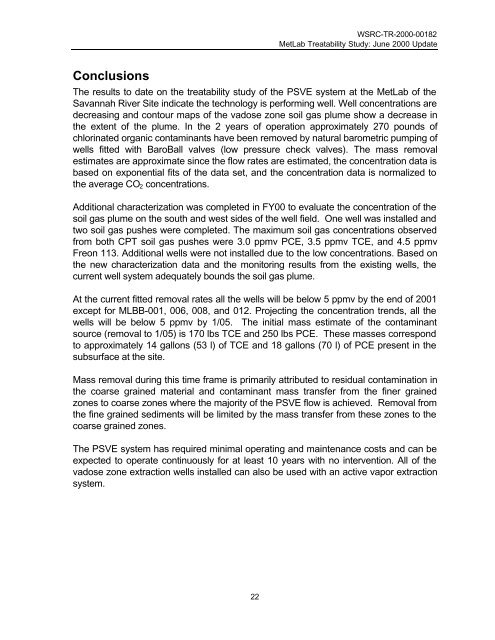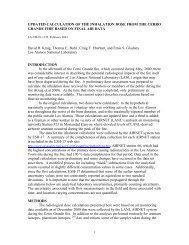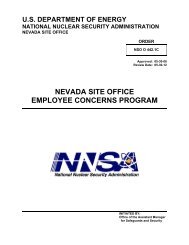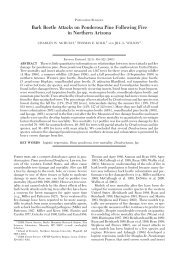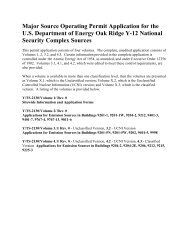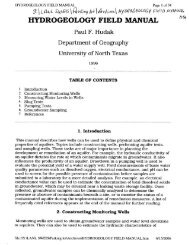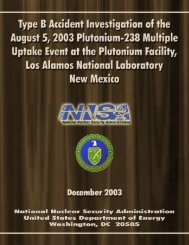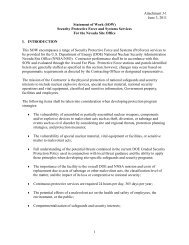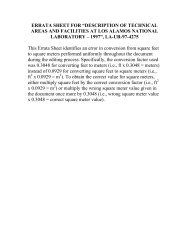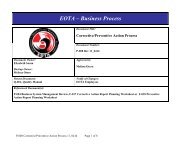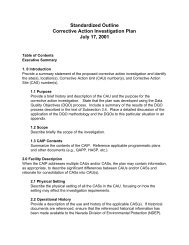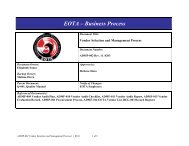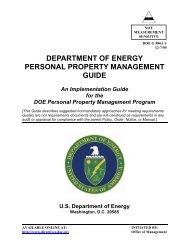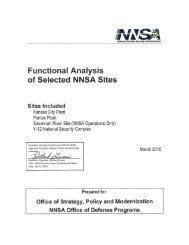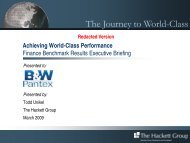An Analysis of Passive Soil Vapor Extraction Wells
An Analysis of Passive Soil Vapor Extraction Wells
An Analysis of Passive Soil Vapor Extraction Wells
You also want an ePaper? Increase the reach of your titles
YUMPU automatically turns print PDFs into web optimized ePapers that Google loves.
WSRC-TR-2000-00182<br />
MetLab Treatability Study: June 2000 Update<br />
Conclusions<br />
The results to date on the treatability study <strong>of</strong> the PSVE system at the MetLab <strong>of</strong> the<br />
Savannah River Site indicate the technology is performing well. Well concentrations are<br />
decreasing and contour maps <strong>of</strong> the vadose zone soil gas plume show a decrease in<br />
the extent <strong>of</strong> the plume. In the 2 years <strong>of</strong> operation approximately 270 pounds <strong>of</strong><br />
chlorinated organic contaminants have been removed by natural barometric pumping <strong>of</strong><br />
wells fitted with BaroBall valves (low pressure check valves). The mass removal<br />
estimates are approximate since the flow rates are estimated, the concentration data is<br />
based on exponential fits <strong>of</strong> the data set, and the concentration data is normalized to<br />
the average CO 2 concentrations.<br />
Additional characterization was completed in FY00 to evaluate the concentration <strong>of</strong> the<br />
soil gas plume on the south and west sides <strong>of</strong> the well field. One well was installed and<br />
two soil gas pushes were completed. The maximum soil gas concentrations observed<br />
from both CPT soil gas pushes were 3.0 ppmv PCE, 3.5 ppmv TCE, and 4.5 ppmv<br />
Freon 113. Additional wells were not installed due to the low concentrations. Based on<br />
the new characterization data and the monitoring results from the existing wells, the<br />
current well system adequately bounds the soil gas plume.<br />
At the current fitted removal rates all the wells will be below 5 ppmv by the end <strong>of</strong> 2001<br />
except for MLBB-001, 006, 008, and 012. Projecting the concentration trends, all the<br />
wells will be below 5 ppmv by 1/05. The initial mass estimate <strong>of</strong> the contaminant<br />
source (removal to 1/05) is 170 lbs TCE and 250 lbs PCE. These masses correspond<br />
to approximately 14 gallons (53 l) <strong>of</strong> TCE and 18 gallons (70 l) <strong>of</strong> PCE present in the<br />
subsurface at the site.<br />
Mass removal during this time frame is primarily attributed to residual contamination in<br />
the coarse grained material and contaminant mass transfer from the finer grained<br />
zones to coarse zones where the majority <strong>of</strong> the PSVE flow is achieved. Removal from<br />
the fine grained sediments will be limited by the mass transfer from these zones to the<br />
coarse grained zones.<br />
The PSVE system has required minimal operating and maintenance costs and can be<br />
expected to operate continuously for at least 10 years with no intervention. All <strong>of</strong> the<br />
vadose zone extraction wells installed can also be used with an active vapor extraction<br />
system.<br />
22


